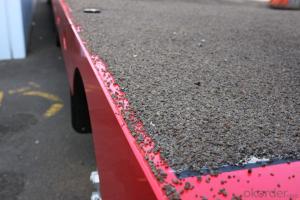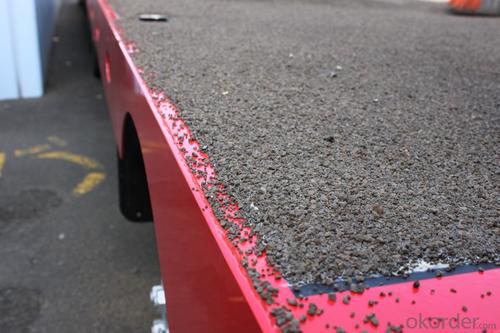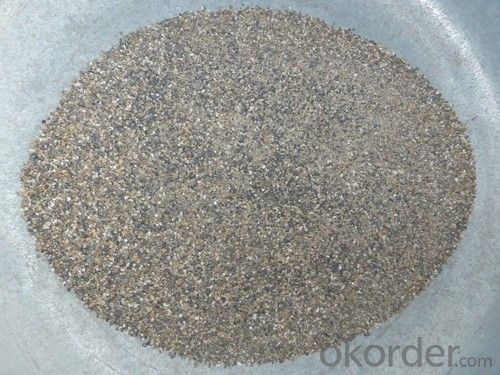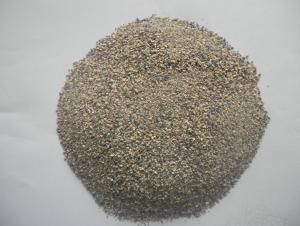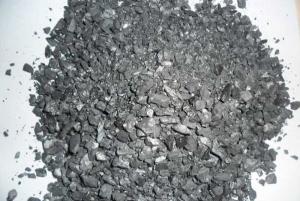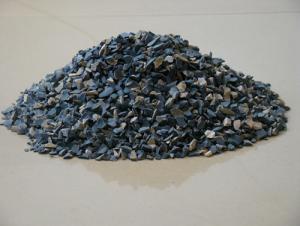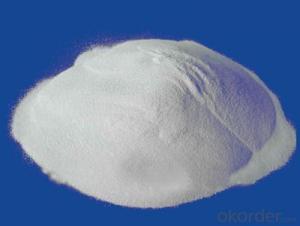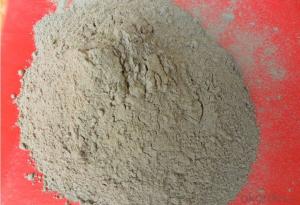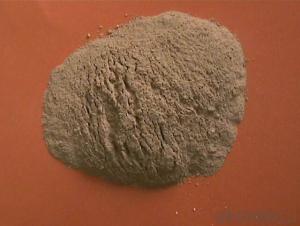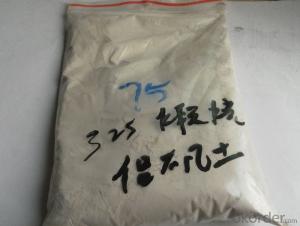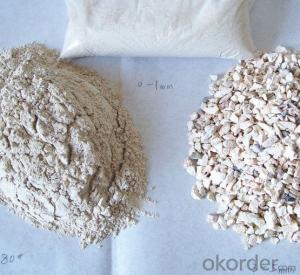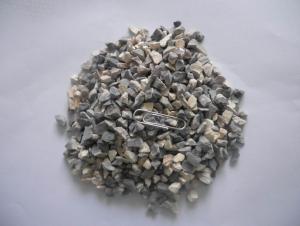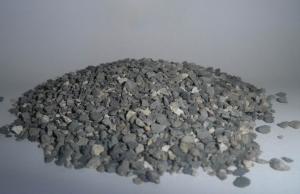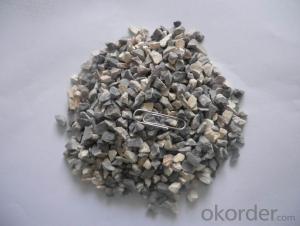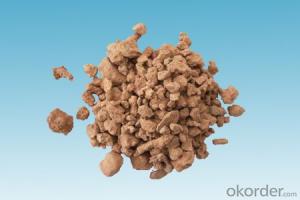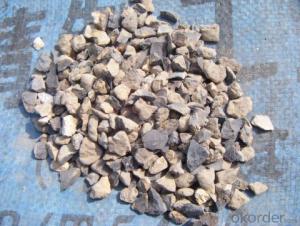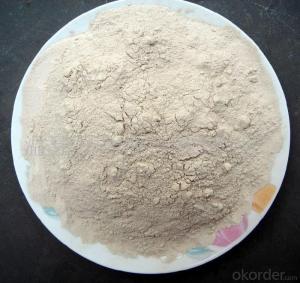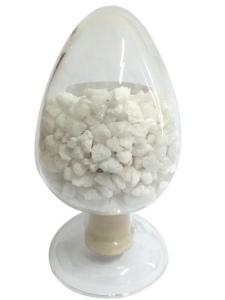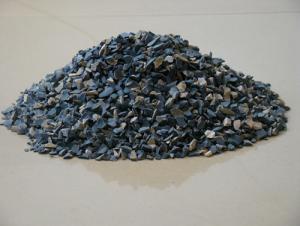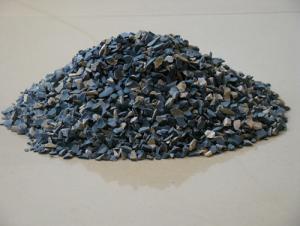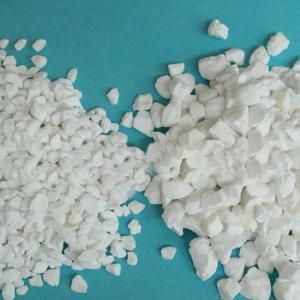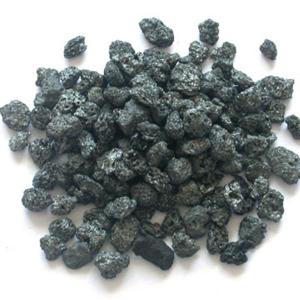Raw Materials for Refractory:Calcined Bauxite for Refractory Bricks
- Loading Port:
- China main port
- Payment Terms:
- TT OR LC
- Min Order Qty:
- 25 m.t.
- Supply Capability:
- 10000 m.t./month
OKorder Service Pledge
OKorder Financial Service
You Might Also Like
Quick Details
| Place of Origin: | Shanghai, China (Mainland) | Shape: | Brick | Material: | Alumina Block |
| SiO2 Content (%): | 3~9% | Al2O3 Content (%): | 3~25% | MgO Content (%): | 40~60% |
| CaO Content (%): | 2% | Refractoriness (Degree): | 1770°< Refractoriness< 2000° | CrO Content (%): | 8~20% |
| SiC Content (%): | none | Model Number: | KS1323 | Brand Name: | cnbm |
Packaging & Delivery
| Packaging Details: | carton |
| Delivery Detail: | 3~5days |
Specifications
calcined bauxite for refractory bricks
Refractory Bricks magnesia chrome bricks are mainly made from sintered
calcined bauxite for refractory bricks
Specifications
Refractory Bricks magnesia chrome bricks are mainly made from sintered magnesia and chrome-oxide after high pressure shaped
Refractory Bricks magnesia chrome bricks are mainly made from sintered magnesia and chrome-oxide, by high pressure shaping and high temperature firing. According to different requirements, the contents of the Cr2O3 can be changed.
item\index | MGe-8 | MGe-12 | MGe-16 | MGe-20 |
MgO,% ≥ | 60 | 55 | 45 | 40 |
Cr2O3,% ≥ | 8 | 12 | 16 | 20 |
Apparent porosity % ≤ | 21 | 21 | 23 | 23 |
Cold crushing strength,MPa ≥ | 30 | 30 | 30 | 30 |
0.2MPa the load softens the beginning temperatur/°C ≥ | 1530 | 1550 | 1550 | 1550 |
Heat shock resistance(950°C air cooling),each ≥ | Provide the data | |||
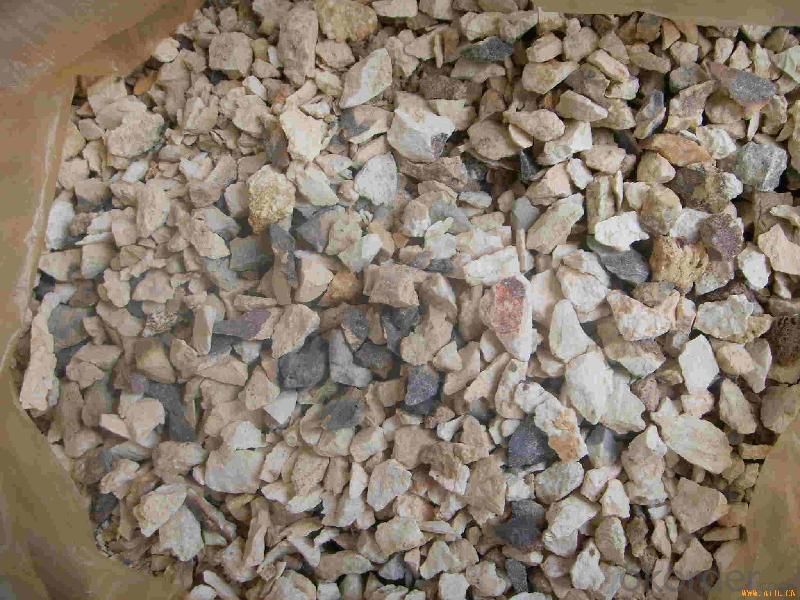
- Q: Who knows about the fire endurance of sintered shaly hollow bricks?
- Sintered shaly hollow bricks of Chu area have high intensity. The average compressive strength of them is up to 15.8, which matches with M7.5 cement mortar that has advantages of low water absorption, and good anti efflorescence performance. The fire endurance of sintered shaly hollow bricks should not exceed1050 degrees otherwise they will burn excessively. I, actually, think that the temperature should be controlled within 980 degrees. I hope my answer may help you.
- Q: Does hardware construction materials contain refractory?
- refractory includes one kind of building materials. It is a special material and not commonly used.
- Q: What are included in fireproofing materials?
- There are many types of fireproof materials, and the following listed below is the main species: All kinds of fire retardant coating such as finishing fire retardant paint, fire retardant coating components, fire-resistant coating for steel structure; all kinds of fire-proof materials such as fire?retardant material and its products, textile, fire?retardant fabric, building materials and products, flooring material and external wall thermal insulation system; all kinds of fireproofing components such as fireproof?panel, fire door, fire resistant window frame, fire resisting shutter, fireproofing glass, elevator landing door,ventilating duct, fire-proof?sealing?material and fire protection smoke exhaust fan. The main indicators to judge fire resistance are: Flame retardency, ignition,production of?toxic?gases, smoke density,heat release and exhaust gas; fire resistance, combustion performance, heat of combustion, fire-resistant performance, high temperature resistance, fire?rating, etc. There are some specific parameters which need to be judged by a professional testing equipment. You can go to the inorganic laboratory to check. The test results of fire rating are accurate.
- Q: What high-molecular polymers can be used as fire-resistant material binder?
- Organic silicon
- Q: What is the appropiate thickness if fire resistant time for ultra thin steel structure coating is 2.5 hours?
- A level fire resistant steel structure building steel column cannot be constructed with super thin steel structure fire retardant coating, because the ultra thin steel structure fire retardant limit is less than 3 hours. Thin fire retardant coating for steel structure is water borne fireproof coatings painted on the surface of steel structure. It will form carbonized fireproof heat insulation protective layer to insulate oxygen and delay the speed of heating steel structure when it catches on fire, avioding the rapid temperature rise of steel structure and increasing its fire resistant limit. Fire resistance performance: The 2mm coating ≥ 60min, 3mm 100min.
- Q: Does anyone know about the A-level fireproof materials?
- A-level decorative integrated plates of thermal insulation, water- and fire-proofing mainly can prevent fire and insulate heat with A-level fireproofing glass fiber as thermal insulation materials. The classification of A1-level external wall materials of thermal insulation, fire- and water-proofing: First, external wall thermal insulation materials: 1. silicate?thermal?insulation?materials 2. gelatine powder polyphenyl granules 3. steel wire gauze picking cement cystosepiment (grs board) 4. extruded sheets; Second, roofing materials: 1. xps extruded sheet 2. EPS foam board 3. perlite and perlite brick 4, vermiculite and vermiculite bricks; Third, heating and air conditioning materials: Polyurethane, rubberplastic sponge, polyethylene, polystyrene foam, glass wool, rock wool; Four, steel structure materials: Polystyrene, extruded sheet, Polyurethane board, glass wool roll mat, etc.
- Q: What types of steel are silicious quicksand and chromium quicksand used in respectively?
- Chromium quicksand can be used in steel-making process that has longer refining time like LF, VD and RH, in stainless steel drainage and thin plate drainage agent. Silicious quicksand is used in short steel-making process, process that is less than 45 seconds or process without refining. You can consult Hua Heng for details or inspect it by yourself.
- Q: What are the new refractories?
- Sintering zirconite. I produce the refractory in Zibo.
- Q: Is there a worker in (Jigang refractory plant)?
- Exactly, you are not in the strict sense of the refractory plant contract worker, your contract is not signed and refractory plant, your wage system, and the worker in the factory is not the same, you can not follow the normal off-duty execution system
- Q: What are the main materials in concrete fireproofing material?
- it can be roughly divided into: fire-resistant coating for steel structure, finishing fire retardant paint, tunnel fire coatings, concrete fire?retardant?coating, cable refractory coating. fire-resistant coating for steel structure is divided into: Indoor ultra-thin fireproof coatings for steel structure, indoor thin steel structure fireproofing coating, indoor thick steel structure fireproofing coating, outdoor ultra-thin fireproof coatings for steel structure, Outdoor thin steel structure fireproofing coating, outdoor thick steel fireproofing coating. I hope it can help you. Hope to adopt my opinion Thank you! )
Send your message to us
Raw Materials for Refractory:Calcined Bauxite for Refractory Bricks
- Loading Port:
- China main port
- Payment Terms:
- TT OR LC
- Min Order Qty:
- 25 m.t.
- Supply Capability:
- 10000 m.t./month
OKorder Service Pledge
OKorder Financial Service
Similar products
Hot products
Hot Searches
Related keywords
